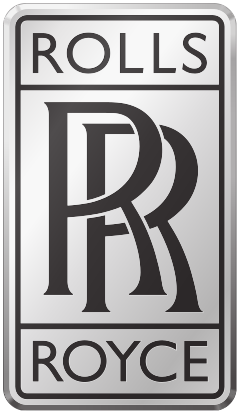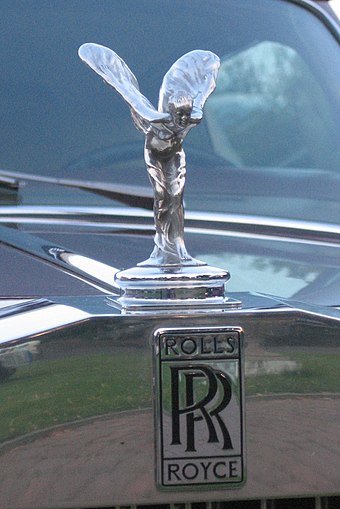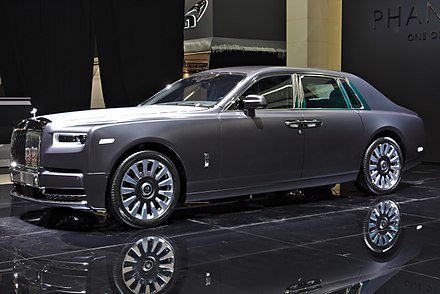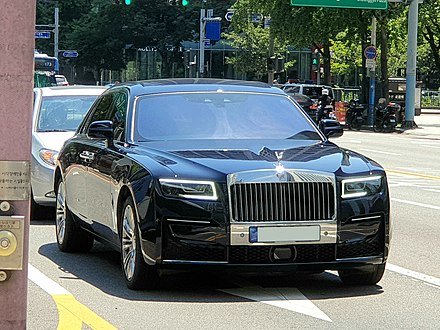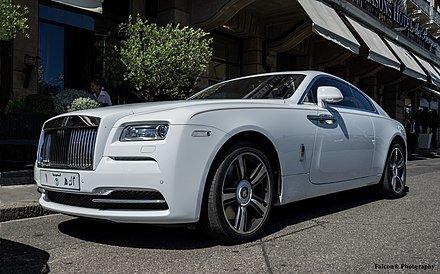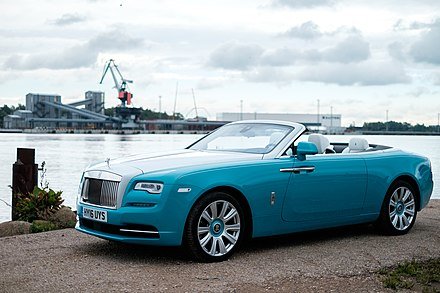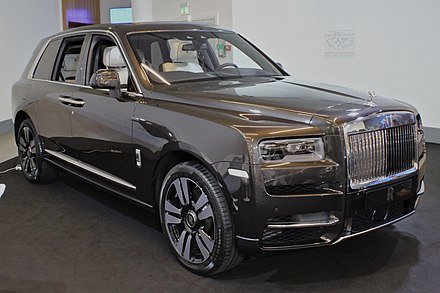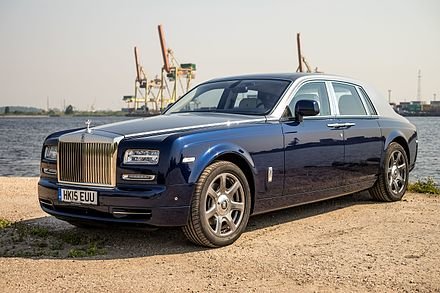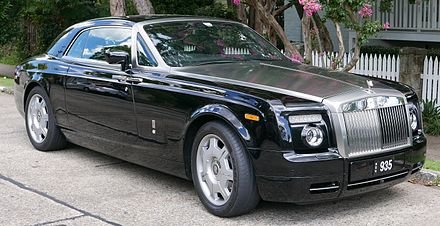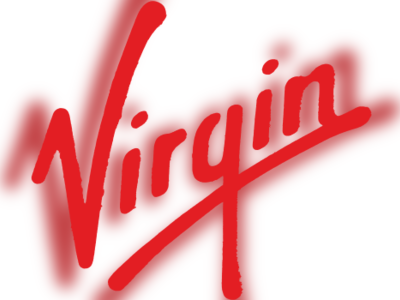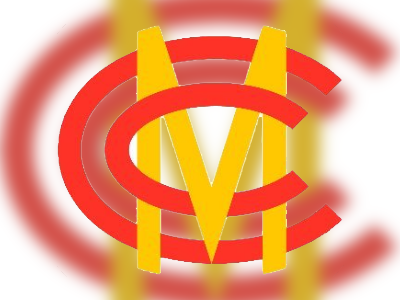British Heritage
Remember, Cherish, Learn.
beta
Rolls-Royce - The Ultimate Motor Car
A Beacon of British Engineering and Luxury Heritage.
When we delve into the annals of British industrial heritage, the name Rolls-Royce emerges as an embodiment of excellence and sophistication. It symbolizes not only the apex of automotive luxury but also the tenacity and innovation of British engineering. Established in 1906, Rolls-Royce has steadfastly redefined the parameters of engineering and luxury. The brand's name has transcended the confines of the automotive industry to become a metaphor for perfection, underscoring the highest echelons of quality in various industries.
Rolls-Royce's journey started when engineer Henry Royce met Charles Rolls, who owned a successful car dealership. They struck an agreement that Royce Limited would manufacture a range of cars to be exclusively sold by CS Rolls & Co – they were to bear the name Rolls-Royce. The success of these vehicles led to the creation of Rolls-Royce Limited in 1906. Throughout the 20th century, Rolls-Royce produced iconic models that solidified its position as the quintessential luxury automobile manufacturer.
The very essence of the Rolls-Royce brand is steeped in its unwavering commitment to producing the "best motor car in the world", regardless of the cost. This was epitomised in the Silver Ghost, which was produced between 1907 and 1925. It was touted as "the best car in the world" after its record-breaking endurance run, reflecting the marque's devotion to reliability and quality, which remain central to its brand ethos.
The company's operations expanded in 1914 when it began producing aero engines. This diversification led to the development of the RB211 turbofan family and the EJ200 turbofan, signifying the company's engineering prowess and innovative spirit. Today, Rolls-Royce PLC is a leading manufacturer of aircraft engines, marine propulsion systems, and power-generation systems.
The trajectory of Rolls-Royce's journey has not always been smooth. In 1971, the company was nationalized following bankruptcy and was split into two entities: Rolls-Royce PLC, which continued the aerospace, marine, and energy businesses, and Rolls-Royce Motors, which carried on the automotive business.
In 1998, Vickers decided to sell Rolls-Royce Motors. This ignited a fierce bidding war between BMW and Volkswagen. Despite losing the bid to Volkswagen, BMW secured the rights to the Rolls-Royce name and logo from Rolls-Royce Holdings PLC. They also obtained the rights to the Spirit of Ecstasy and Rolls-Royce grille shape trademarks from Volkswagen AG. This unique set of circumstances led to BMW establishing Rolls-Royce Motor Cars Limited as a wholly-owned subsidiary in 1998, which began manufacturing Rolls-Royce-branded cars in 2003.
The transition from the direct lineage of Rolls-Royce Motor Car engineering to the new BMW subsidiary was a complex process, involving negotiations and agreements to ensure the continuity of the production and the preservation of the heritage associated with the marque.
Under BMW's ownership, Rolls-Royce made its grand comeback with the launch of the Phantom four-door sedan in 2003, a luxury car that resonated with the brand's legacy of excellence and opulence. This marked a new era of Rolls-Royce cars, and the company has since expanded its product line with models such as the Ghost, Wraith, Dawn, and the Cullinan SUV.
A testament to Rolls-Royce's return to prominence came under the stewardship of current chief executive Torsten Müller-Ötvös. He joined the company in 2010 with a commitment to regain the quality standards that made Rolls-Royce a symbol of automotive luxury. His tenure witnessed substantial sales growth, particularly in emerging markets. In 2014, Rolls-Royce Motor Cars Limited recorded the highest sales in its history, selling 4,063 cars.
As Rolls-Royce continues to traverse its unique path, its contribution to the British industrial heritage remains unquestionable. Despite the various challenges and transformations, the company has steadfastly maintained its commitment to engineering excellence, luxury, and innovation.
The legacy of Rolls-Royce is reflected not just in its iconic vehicles but also in its contribution to the broader engineering industry. It continues to push the boundaries of luxury and performance, while its name remains a byword for peak quality and aspiration worldwide.
The iconic Spirit of Ecstasy, adorning the bonnet of every Rolls-Royce, continues to symbolize the pursuit of perfection and the pinnacle of luxury. From its roots in the United Kingdom to its presence in garages worldwide, the story of Rolls-Royce is a testament to British craftsmanship, engineering prowess, and an unwavering commitment to quality.
A Distinctive Chapter in British Industrial Legacy
Rolls-Royce's journey started when engineer Henry Royce met Charles Rolls, who owned a successful car dealership. They struck an agreement that Royce Limited would manufacture a range of cars to be exclusively sold by CS Rolls & Co – they were to bear the name Rolls-Royce. The success of these vehicles led to the creation of Rolls-Royce Limited in 1906. Throughout the 20th century, Rolls-Royce produced iconic models that solidified its position as the quintessential luxury automobile manufacturer.
The very essence of the Rolls-Royce brand is steeped in its unwavering commitment to producing the "best motor car in the world", regardless of the cost. This was epitomised in the Silver Ghost, which was produced between 1907 and 1925. It was touted as "the best car in the world" after its record-breaking endurance run, reflecting the marque's devotion to reliability and quality, which remain central to its brand ethos.
The company's operations expanded in 1914 when it began producing aero engines. This diversification led to the development of the RB211 turbofan family and the EJ200 turbofan, signifying the company's engineering prowess and innovative spirit. Today, Rolls-Royce PLC is a leading manufacturer of aircraft engines, marine propulsion systems, and power-generation systems.
Navigating Ownership Changes and Challenges
The trajectory of Rolls-Royce's journey has not always been smooth. In 1971, the company was nationalized following bankruptcy and was split into two entities: Rolls-Royce PLC, which continued the aerospace, marine, and energy businesses, and Rolls-Royce Motors, which carried on the automotive business.
In 1998, Vickers decided to sell Rolls-Royce Motors. This ignited a fierce bidding war between BMW and Volkswagen. Despite losing the bid to Volkswagen, BMW secured the rights to the Rolls-Royce name and logo from Rolls-Royce Holdings PLC. They also obtained the rights to the Spirit of Ecstasy and Rolls-Royce grille shape trademarks from Volkswagen AG. This unique set of circumstances led to BMW establishing Rolls-Royce Motor Cars Limited as a wholly-owned subsidiary in 1998, which began manufacturing Rolls-Royce-branded cars in 2003.
The transition from the direct lineage of Rolls-Royce Motor Car engineering to the new BMW subsidiary was a complex process, involving negotiations and agreements to ensure the continuity of the production and the preservation of the heritage associated with the marque.
Revitalizing the Marque in the 21st Century
Under BMW's ownership, Rolls-Royce made its grand comeback with the launch of the Phantom four-door sedan in 2003, a luxury car that resonated with the brand's legacy of excellence and opulence. This marked a new era of Rolls-Royce cars, and the company has since expanded its product line with models such as the Ghost, Wraith, Dawn, and the Cullinan SUV.
A testament to Rolls-Royce's return to prominence came under the stewardship of current chief executive Torsten Müller-Ötvös. He joined the company in 2010 with a commitment to regain the quality standards that made Rolls-Royce a symbol of automotive luxury. His tenure witnessed substantial sales growth, particularly in emerging markets. In 2014, Rolls-Royce Motor Cars Limited recorded the highest sales in its history, selling 4,063 cars.
Rolls-Royce: An Enduring Symbol of British Excellence
As Rolls-Royce continues to traverse its unique path, its contribution to the British industrial heritage remains unquestionable. Despite the various challenges and transformations, the company has steadfastly maintained its commitment to engineering excellence, luxury, and innovation.
The legacy of Rolls-Royce is reflected not just in its iconic vehicles but also in its contribution to the broader engineering industry. It continues to push the boundaries of luxury and performance, while its name remains a byword for peak quality and aspiration worldwide.
The iconic Spirit of Ecstasy, adorning the bonnet of every Rolls-Royce, continues to symbolize the pursuit of perfection and the pinnacle of luxury. From its roots in the United Kingdom to its presence in garages worldwide, the story of Rolls-Royce is a testament to British craftsmanship, engineering prowess, and an unwavering commitment to quality.
- Rolls-Royce Motor Carsen.wikipedia.org
